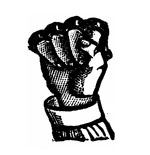
The Role of ‘Ramparts’ Magazine in the Campaign Against Pius XII
A CATHOLIC FRONT FOR COMMUNIST AGITATION
“The ramparts of Ramparts were used for attacking the Church, rather than defending it.” — Ramparts editor Warren Hinkle
During World War II the Catholic Church sheltered Jews and other victims of the Nazis, provided falsified travel documents to help them escape, distributed food and clothing to those who suffered, comforted the injured and grieving, and transmitted vital information to worried relatives. In Nazi circles it was axiomatic that Pope Pius XII sympathized with the Allies and assisted their cause. In the West he enjoyed near-universal acclaim for aiding Jews and other victims with diplomatic initiatives, frequent calls for peace, thinly veiled public condemnations, and an unprecedented continent-wide network of sanctuary. Yet, more than sixty-five years later, many people fault Pius XII for not publicly and repeatedly denouncing Adolf Hitler and the Nazis.
The charge that Pius XII was overly tolerant of the Nazi regime was leveled by communist leaders and their agents toward the end of World War II and in the years immediately thereafter. Most people, however, trace the beginning of the so-called black legend of Pius XII to a play titled The Deputy (Der Stellvertreter), written by a then-unknown German playwright named Rolf Hochhuth. Not long after it opened in Berlin in 1963, Pius XII’s reputation flipped so quickly and so completely — without any new evidence being uncovered — that the Jesuit magazine America was prompted to ask the following questions:
What has happened since 1958 to erase with one sweep these informed and unsolicited tributes to the memory of Pope Pius XII? Why do they count for nothing when The Deputy comes to town? By what dialectic, or through what human fickleness, has a great benefactor of humanity, and of the Jews particularly now become a criminal?
As these questions suggest, this change in Pius XII’s reputation was not an organic result of honest inquiry. Something else was at play.
In early 2007 Ion Mihai Pacepa, a former Romanian intelligence chief and the highest-ranking official ever to defect from the Soviet bloc, wrote an article explaining that in the late 1950s Soviet Premier Nikita Khrushchev approved a plan to destroy the Vatican’s moral authority by smearing the reputation of the late pontiff. This marked a shift in post-war policy. Shortly after the war, the Soviets had framed numerous Catholic leaders, charging them with having collaborated with the Nazis. Among the best-known victims of these campaigns were Cardinals Beran of Prague, Stepinac of Croatia, Wyszynski of Poland, and Mindszenty of Hungary. Mindszenty, however, escaped captivity, obtained sanctuary in the U.S. embassy, and wrote memoirs revealing the Soviet duplicity. Some of the agents involved in the framing of Stepinac also revealed their techniques. This time, Khrushchev decided, disinformation experts from across the Soviet bloc would target the recently deceased Pope, who would not be able to defend himself.
You May Also Enjoy
Throughout Central America the Church is a voice of the simple people. Often it is hemmed in by at best suspicious regimes, of the Right or the Left.
Any efficient democracy must operate on the principle of subsidiarity, and this holds true in the economic as well as the political sphere.
Paul Kengor is an accurate historian who recognizes all the atrocities the USSR committed and the blight it cast across the 20th century.

